#seedlings
Text

overnight success..
355 notes
·
View notes
Text

2-3-24
#moleskine#sketchbook#sketch#daily#dailyart#dailydrawing#dailypainting#dailysketch#sketchaday#artoftheday#art#artbook#artists on tumblr#watercolor#gouache#painting#seeds#sprouts#seedlings#pot#plant
287 notes
·
View notes
Text
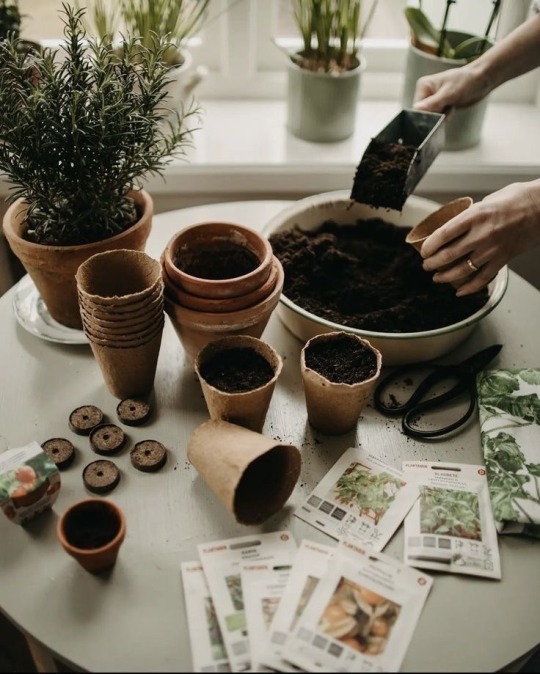
🍃sustainable living
Pinterest • https://www.pinterest.com
107 notes
·
View notes
Photo
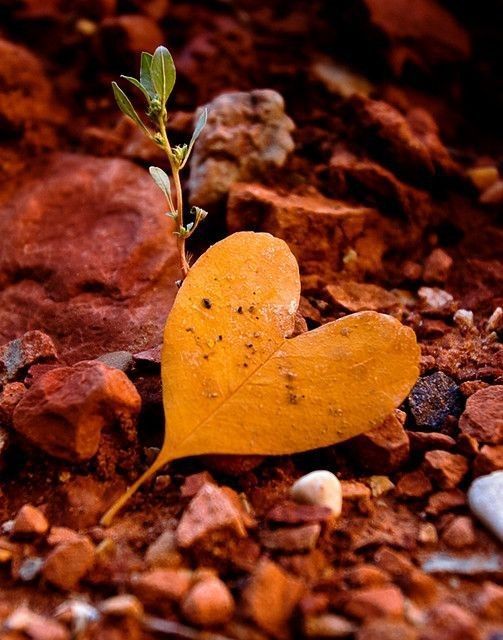
“Mother Nature's Heart” ~ Photography by Brian Knott
57 notes
·
View notes
Text
How not to over-water your plants
So, firstly, if you're new to plants, you might be wondering, well what is so bad about over watering? After all, they're plants aren't they? Don't they need water to survive? The more the merrier? And to you I say, good point, here's why it can work with plants outside, but not plants in little pots inside.
Have you ever left a piece of organic matter in the water? Like, a leaf, or even a flower in a flower vase. If you left it in for a week, it develops a bad smell, and the leaves, stems and roots will start to degrade, ferment, and rot in the water. That's exactly what's happening to the roots of your houseplants if they're left in an overly-wet soil; they don't have any access to oxygen, and they rot. Outside, the soil is constantly draining the water further down, the earth is capable of absorbing a lot of water while leaving the topsoil pleasantly damp, but not liquid with water. So you need to make sure your soil is never so wet that it rots your plants roots; if it comes to that, your plant will start turning brown or black, become squishy and spongy, and eventually rot completely.
So how do you avoid it? You'll often hear advice about 'having good drainage', which means your pot needs to have little holes for the water to come out, and the soil shouldn't be so dense and clayish that it would stop water from draining through. However, even if you have perfect drainage, you can still pour in so much water that the little tray under the pot is filled with water – thus the plants sit in water again, rotting. It's difficult to see whether the soil is saturated with water too, sometimes the top of the soil can seem completely dry and you don't see if it's all the way dry or not, it can be misleading. You also can't just stick to a watering schedule because the soil dries out at different speed, based on humidity, heating, temperature, season, exposure to sunlight, it will be different every time. So how can you get around this problem?
The solution I found works perfectly is: lift the pot. As soon as you feel the weight of the pot in your hands, you'll be able to tell whether that thing is heavy as if it's filled with water, or if it's so light that there's barely any water in it. If your pot is super heavy and feels like you just lifted a bucket of water, leave it be, do not water it for a week, until it becomes a normal weight (it should feel like one third of it is water). If your pot is so light, that it feels like nothing is in it at all, then you need to water enough to fill that entire tray underneath, and then let the soil absorb the water for a while. If the soil is super dry, it becomes hydrophobic, and it will take time for it to start absorbing water again; but don't worry, if you leave it sitting in water overnight, it should be fine again, and the plants won't start to rot after just one day of sitting water. A normal watering should be just one third of the container of the plant, that should saturate the soil so it's damp, but not dripping with water.
A further step you can take to make sure your plants are happy with the amount of water, is to research the plants themselves, and how they like to be watered. Most plants will do well on having their soil pleasantly damp, but some houseplants like to have their soil dry out completely before they get a good amount of water again; for instance, lemon trees like that feeling of being dried completely, and then being watered generously, because they're used to growing in tropical areas, and going through droughts and rainfall. Some plants are capable of taking moisture from the air, but they still love having a good amount of water in the pot. Nothing will give you better insight than researching every plant separately.
So what about succulents? You may have been told that you can ignore succulents and they'll be fine, however I found this not to be true, after my poor neglected succulent died due to non watering. You can't even use the trick of lifting the pot, if you're having succulents and aloe vera, because those plants keep water inside of their bodies, so if you lift the pot, it might be heavy, not because it's filled with water, but because the plants themselves are heavier, keeping water inside of themselves. They absolutely need water too, there's just a difference in how long they can do without it. But we're not trying to give those plants endurance tests, we're trying to make sure they're happy and thriving. So how to know when to water your succulents or aloe vera?
The solution is: you try to see if they're squishy. A succulent happily filled with water, will be firm and sturdy to touch. If your succulent is starting to dry, and is now spending the water they have in their inside store, they'll become squishy! If you lightly press with your fingers on the leaf, or the stem of a succulent, and it gives way and squishes, that means the plant needs more water in order to be happy. The squishiness starts closer to the base and the stem of the plant, so if you can check the widest, most base leafs, you'll get the best idea of whether they need water or not. Also, if you see any leaves on them that are dried, brown, dying away, you can pull these off! Your plants are only burdened by keeping dead plant matter on, if you pull those off the plant will immediately look healthier, have less to worry about, and be ready to grow new healthy leaves.
Any big plant can generally survive longer without water than a smaller plant, simply because they are able to store water inside of themselves, so they have some reserve. You always have to keep a closer eye on your tiniest little plants, and your giant plants will need your attention less frequently. Another tip is to have your plants somewhere you see them every day, because if your plant is somewhere you have to specifically go to see it and water it, it is likely you'll forget about its existence until it's too late. Even writing this I remembered I had some plants on a window that I don't usually use, and I've forgot to water them for two weeks. Oops. (they're fine I watered them now).
I hope these tricks help you have confidence in caring for your plants! It took me a while to figure it out, so I'm happy to share my knowledge. If you know more tricks please write them on this post so that I may become smarter too.
#plant care#houseplants#over watering#overwatering#gardening#inside plants#seedlings#i'm gonna start my seedlings soon!!!#plants#growing plants
54 notes
·
View notes
Text
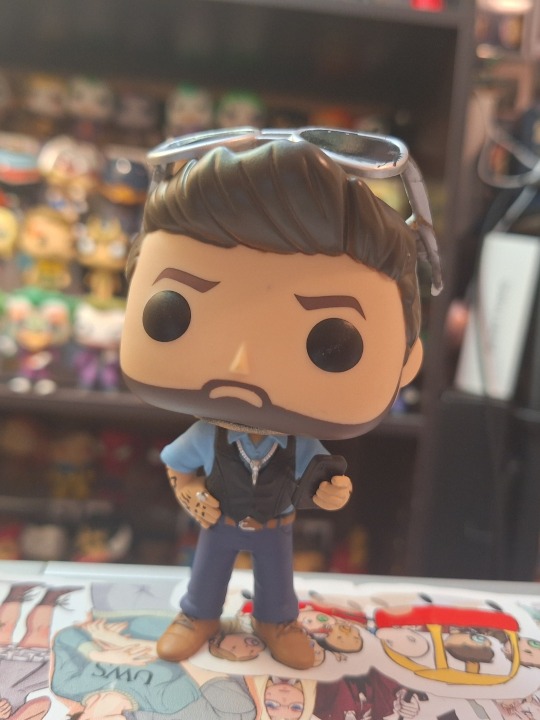

Here's Johnny!!
My customization attempt of John Seed! Also, here are the rest of the seedlings and the judge deputy.
#john seed#the inquisitor#far cry 5#fc5#far cry#seedlings#jacob seed#joseph seed#the judge#judge deputy#funko#funko pop#custom funko#custom figure#custom funko pop#funko collection#funkocollector#funko figures
48 notes
·
View notes
Text
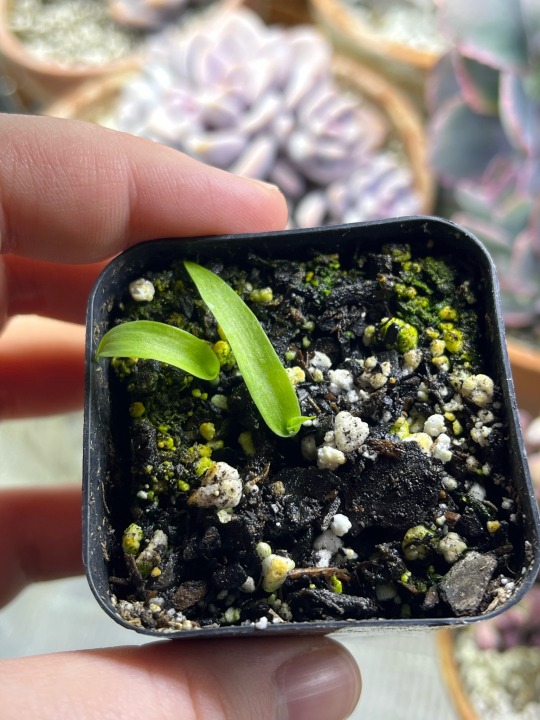
Spider plant seedlings 🌱
#my first time growing them from seed ! my big spidey gave me seed pods for the first time :)#chlorophytum comosum#plants#plant#plantblr#spider plant#seedlings#seedling#horticulture#botany#plant propagation#propagation#houseplants#mine
35 notes
·
View notes
Text
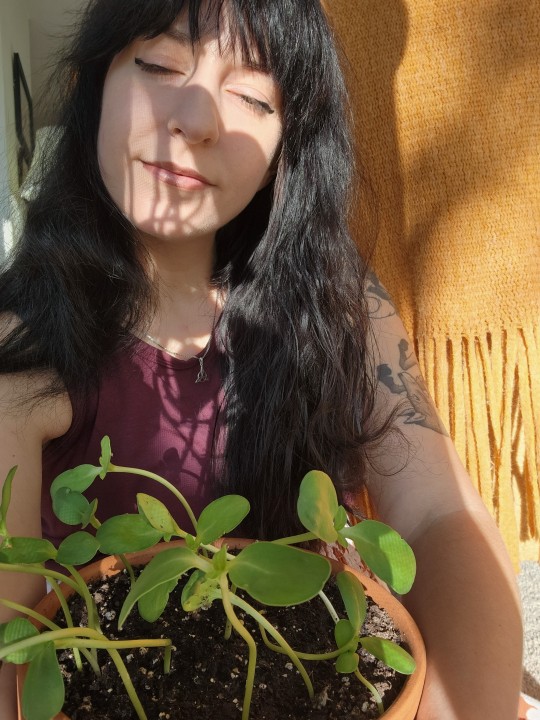
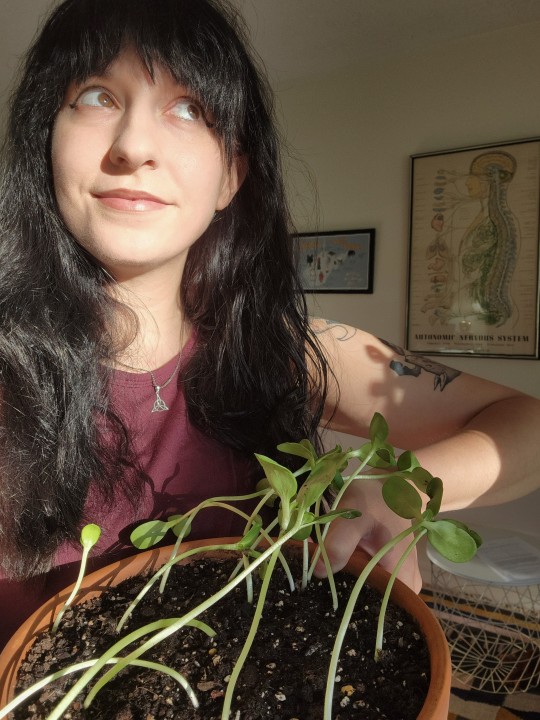

Embracing my plant goth vibes (growing sunflowers and pumpkins and having long dark hair) 🖤🌻🥕🍄
#me#my face#gardening#plants#plant mom#sunflowers#seedlings#flowers#pumpkins#plantcore#nature#naturecore#plant goth#selfies#pictures#images#brunette#green#girls with tattoos#girls with long hair#mine#cute#girl#okay to rb#okay to reblog
85 notes
·
View notes
Text

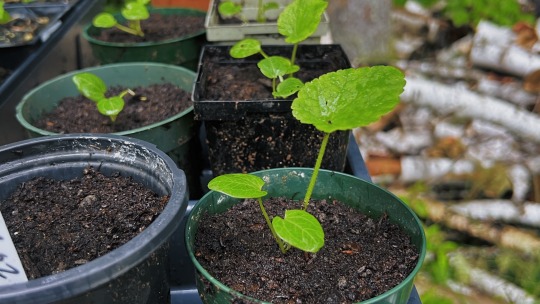
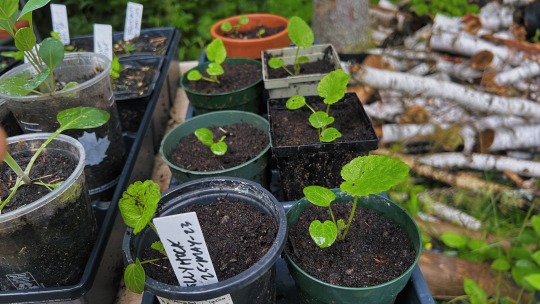
I didn’t spend a lot of time in the garden today due to a bear showing up last night. We’ve always been aware that there are plenty of bears in the area and we’ve spotted a couple on the road before but not right on our window. I was literally carrying a digging fork the whole time I was out like it’s gonna save me. I managed to do some weeding, and slug hunting and I up potted the hollyhocks today. Hopefully, most of them survive. Can’t wait to see their blooms next spring.
3-Jul-2023
#hollyhocks#plantblr#gardencore#plant community#plantcore#plants#plant blog#garden#garden 2023#seedlings#gardening#gardenblr#perennial
62 notes
·
View notes
Text

141 tomatoes in the ground, planted last evening. I was planning to buy and plant them a couple of weeks from now, but someone brought us 3 trays of tomatoes a few days ago and they were big enough, I didn't want to keep them in trays much longer.
The first row are, as always, my tiny colorful heirlooms, but turns out the trays were enough to fill the other 3 rows.
Took longer than expected to plant them, but I'm glad it's a gardening task I can check off my spring to do list.
#home garden#tomatoes#seedlings#planting#gardeners on tumblr#grow your own food#gardenblr#edible gardening#garden#gardenblog#gardening#gardencore
135 notes
·
View notes
Text
More enjoying of the nice weather, this time sans Toph (the neighbor is on their porch and apparently she doesn't like them? Normally shes very friendly)
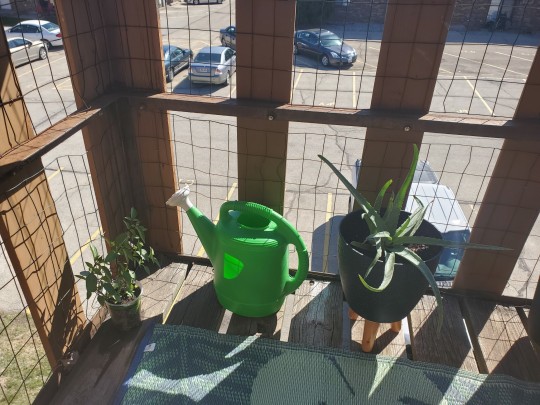
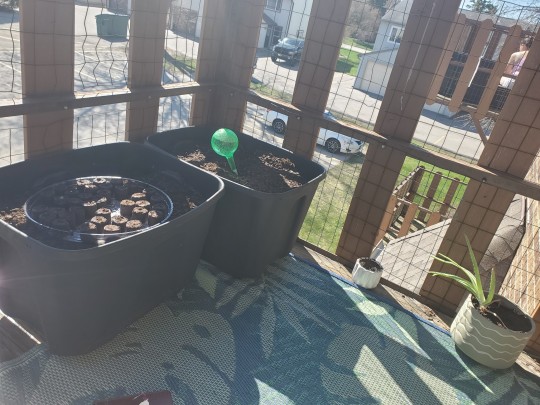
10 notes
·
View notes
Text

Open pollinated Aloe hybrid I grew from seed, repotted today
#succulents#garden#nature#plants#aloe plant#aloe#plant collector#cactus#houseplants#seedlings#grown from seed#repotting#succulent propagation
29 notes
·
View notes
Text

Starting watermelon seeds indoors offers a rewarding way to jump-start your melon-growing season and enjoy a bountiful harvest of sweet, juicy fruits. By following this complete guide, you'll be equipped with the knowledge and skills to successfully start watermelon seeds indoors!
Seedling Success: Starting Watermelon Seeds Indoors
#gyo#lovegardening#gardening uk#gardening tips#gardening#garden#gardenchat#organic gardening#vegetable gardening#backyard#home and garden#gardenblr#gardencore#gardeners on tumblr#gardens#my garden#urban gardening#vegetable garden#plants#watermellon#watermelon#growyourown#grow your own food#starting seeds#seedstarting#planting seeds#seedlings#seeds#lol#gardenersofinstagram
11 notes
·
View notes
Text
So, I decided I could start onion seeds early. I've never started onions from seeds, and my seeds are just the ones I've collected from an onion in my garden (if they grow for 2 years, they make a flower, and then the seeds are inside).
First I had to find some good containers, and this is where I got side tracked. I've been collecting plastic cups and food containers for years now, and I've just been putting them in the basement, not realizing how much I've got. So I grabbed all of the storage boxes and decided to see what I have. This is the sight that greeted me:

I became a little concerned, in anyone else's home this many containers would be considered garbage, but when I think more about it, it's a good thing for me to have them. I never bought any of these, I've gotten them from roommates, been given some as a gift, from people trying to get rid of them, some I've just found in the forests and creeks, some I've found in the trash and saved. While they're all with me, they're not in a landfill, and I'm dreaming of one day having a big garden that can feed lots of people, and at that point, it would be so great to never be out of little seedling pots.
I spent some decent time sorting these out in categories and stacking them to make them more manageable, these are the categories:

At this point I went to research how growing onion from seed works; I found out a lot! Firstly, they need to be planted very shallow, half of an inch. They should be started 8-10 weeks before planting outside, that also works out great, I can plant them out in March. They will germinate in one week, and sometimes their tops are stuck in the soil, and will stop them from growing; in that case it's best to cut the top off, than to pull it out. The plant is so fragile, you're likely to pull it all out. Cutting the top off will not hurt them, but make them grow more straight. I also found out that onions decide to bulb once they calculate that there's more than 10 hours of sun in the day, how cool! That's also why its important to start them early, and give them a good start before the days become long enough for them to go into bulb mode.
So last year when planting, I've been mixing some forest soil, old soil and sand into my planting mix, because that made the soil very light and airy, and I thought it would be good for the little plants. I've however noticed, that the plants were not doing great in that soil, even though they did succeed, it took them longer than usual. I've decided to just go with pure forest soil this time, no mixes or additions, that way it will have the max nutrients and I think it's what my plants are looking for.

These are the containers I've chosen; I've also put them in these big transparent cake containers, because when I close them up like that, water cannot evaporate out, and they're kept in high humidity, which will help the germination. After they start growing, I'll put them in normal trays.

I've decided to experiment a bit so for the left one, I put exactly one single seed in each space, but in the second one, I've peppered a lot of seeds, just to see what happens. I can always thin them out if a lot of them grow. Once on top of the soil, I've sprayed them with water gently, and then peppered some more soil on top so they're safely surrounded with soil.

And now we wait! Hopefully I'll have some onions next year :)
#growing food#stacking plant pots#growing onions#starting onions#gardening#inside plants#seedlings#sowing seeds#starting plants#soil mix#homesteading
41 notes
·
View notes
Photo
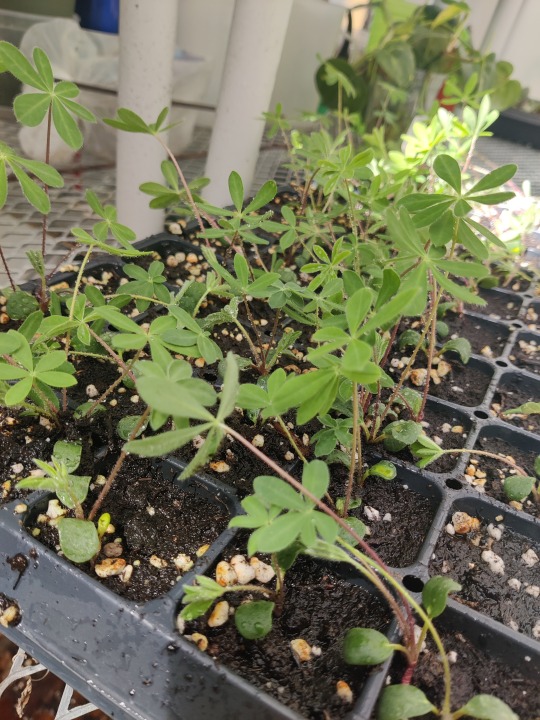
Native blue lupine, also for habitat restoration projects.
46 notes
·
View notes
